Glossary
Temperature-Modulated DSC Measurements
Why do we use temperature-modulated DSC?
Temperature-modulated DSC (TM-DSC) is used to separate multiple thermal effects that occur in the same temperature range and overlap in the DSC curve.
How does it work?
The temperature increase is no longer linear, but is a sinusoidal function added to the underlying heating:
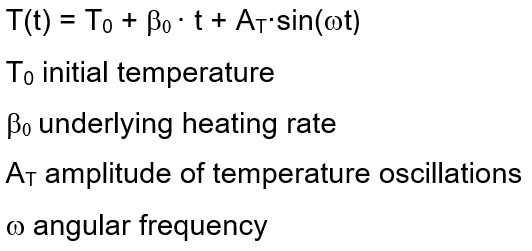
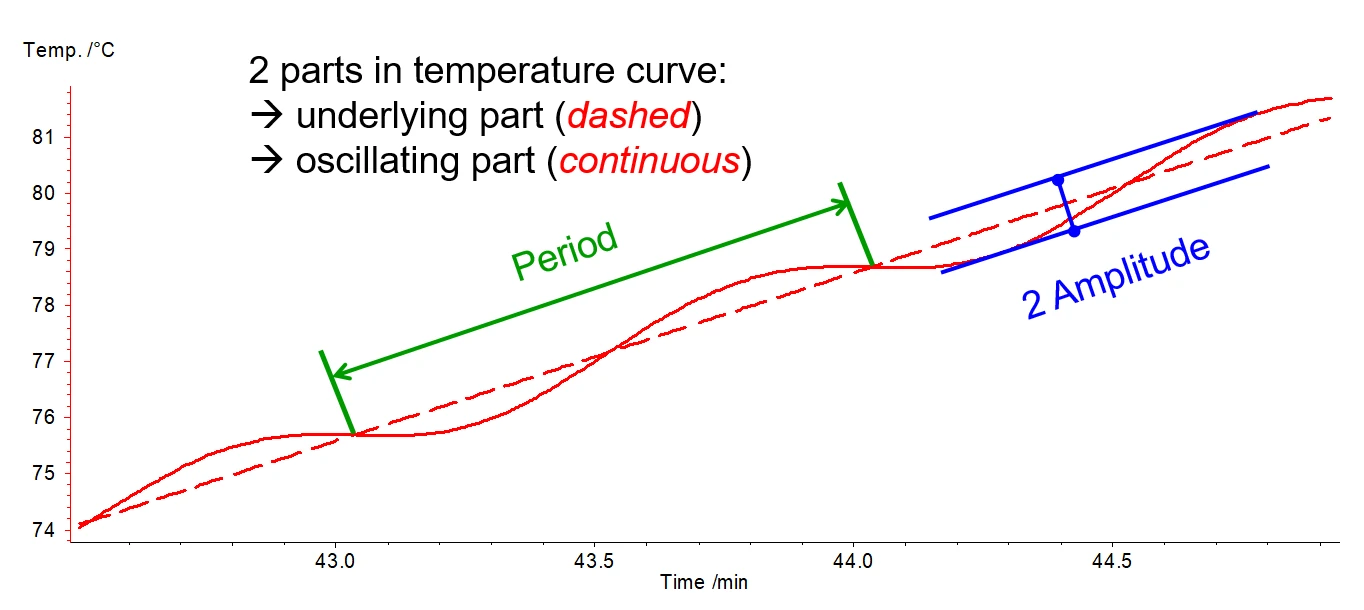
The response to the sinusoidal signal of the temperature is a sinusoidal DSC signal.
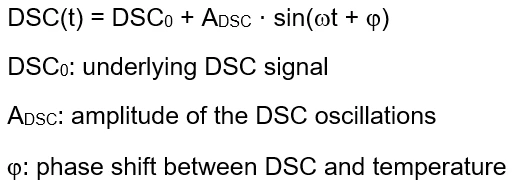
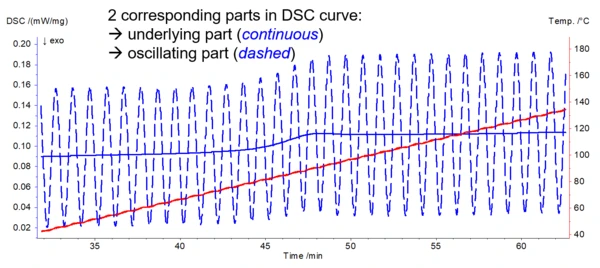
The total heat-flow DSC0, which corresponds to the standard DSC curve without modulation, can be separated into a reversing and a non-reversing part.
- The reversing part is related only to the heat capacity changes of the sample (Glass Transition TemperatureThe glass transition is one of the most important properties of amorphous and semi-crystalline materials, e.g., inorganic glasses, amorphous metals, polymers, pharmaceuticals and food ingredients, etc., and describes the temperature region where the mechanical properties of the materials change from hard and brittle to more soft, deformable or rubbery.glass transition, structural changes).
- The non-reversing part yields information about time-dependent processes (RelaxationWhen a constant strain is applied to a rubber compound, the force necessary to maintain that strain is not constant but decreases with time; this behavior is known as stress relaxation. The process responsible for stress relaxation can be physical or chemical, and under normal conditions, both will occur at the same time. relaxation, crystallization, curing, Reakcja rozkładu (dekompozycji)A decomposition reaction is a thermally induced reaction of a chemical compound forming solid and/or gaseous products. decomposition, evaporation).
Example: Accurate determination of the glass transition midpoint temperature
The following figure shows the DSC measurement on a polystyrene sample. A Glass Transition TemperatureThe glass transition is one of the most important properties of amorphous and semi-crystalline materials, e.g., inorganic glasses, amorphous metals, polymers, pharmaceuticals and food ingredients, etc., and describes the temperature region where the mechanical properties of the materials change from hard and brittle to more soft, deformable or rubbery.glass transition is detected. Its midpoint temperature cannot be evaluated accurately because it is overlapped by an endothermal peak due to the release of mechanical tensions.

The temperature-modulated measurement allows for separation of the two effects: The Glass Transition TemperatureThe glass transition is one of the most important properties of amorphous and semi-crystalline materials, e.g., inorganic glasses, amorphous metals, polymers, pharmaceuticals and food ingredients, etc., and describes the temperature region where the mechanical properties of the materials change from hard and brittle to more soft, deformable or rubbery.glass transition is detected in the reversing heat flow; the RelaxationWhen a constant strain is applied to a rubber compound, the force necessary to maintain that strain is not constant but decreases with time; this behavior is known as stress relaxation. The process responsible for stress relaxation can be physical or chemical, and under normal conditions, both will occur at the same time. relaxation peak in the non-reversing heat flow.
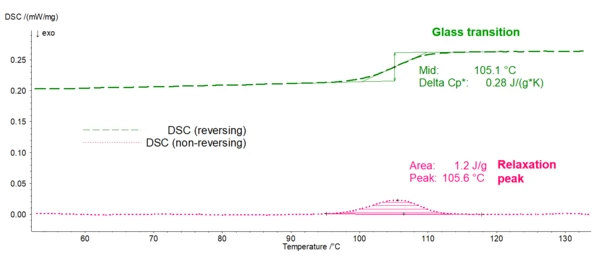
Important remark: “Reversing” doesn’t have the same meaning as “reversible”. All irreversible effects from a physical standpoint (curing, evaporation) are detected in the non-reversing heat flow. But the non-reversing heat flow also contains a portion of the reversible effects (melting). For example, the melting effect is detected in both the reversing and non-reversing heat flow, and can therefore not be separated by means of TM-DSC.